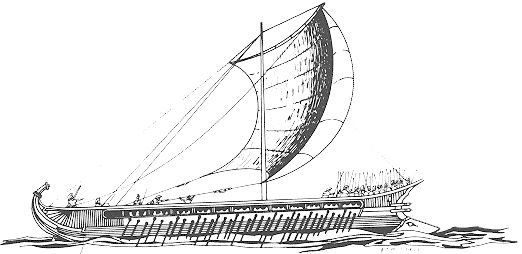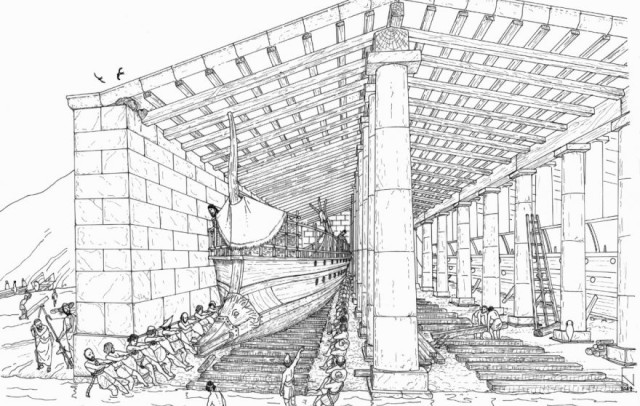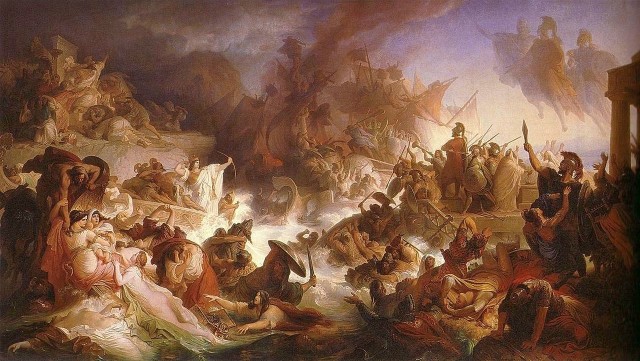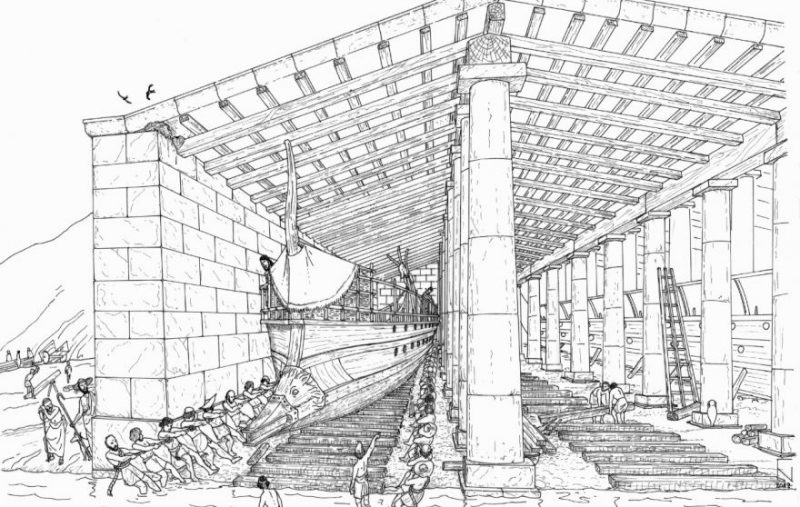The Persian invasion of Greece yielded a plethora of amazing stories, from the stand at Thermopylae to the improbable victory at Salamis. The struggle would bring Hellenic culture into a golden age and it may all have been because of the massive port of Athens that was built after the Battle of Marathon.
The Battle of Marathon was quite the wake-up call for a few Greeks. Many thought that the Greeks were simply better than any amount of the Persians, but others knew that the Greek victory at Marathon was due to quite a bit of luck.
Themistocles was one of those who saw Marathon as a warning of what Persia could bring. Themistocles gained fame from fighting at Marathon and used that fame to urge, practically beg, the Athenians to build a mighty fleet to protect against a future invasion. Despite his popularity, Themistocles struggled to finally get the powerful fleet built.

This fleet of about 200 ships would have had to be housed in a military port of some kind. Piraeus was chosen as it had a large bundle of natural harbors and was defensible, despite being some distance from Athens.
It is this military port that was recently discovered by marine archaeologists. They were tipped off by a local fisherman who told archaeologists how he used to fish off of an antique pillar that stuck out of the bay. From the tip, the archaeologists were able to find massive ship sheds, built to protect the ships from the weather and attacks. Piraeus today is one of the top 50 busiest container and passenger ports in the world and is quite polluted. The marine divers fought through pollution, low visibility and multiple other ship pieces and artifacts from other periods to get to the ancient harbor.

The extent of what they found was awe-inspiring. The massive buildings were built with sturdy stone walls and columns two/three stories tall. The amount of stone and labor required would make these series of sheds among some of the most expensive buildings constructed in the ancient world. With these findings, it is understandable that Themistocles might have had some opposition in getting this built.
It is from these housings that the brave sailors of Athens sailed out from to fight the Persians at Salamis. Just prior to the colossal battle, the Persians had captured and burned the abandoned city of Athens. All hopes were pinned on the almost hopeless sea battle or an even more hopeless stand at the isthmus of Corinth. By packing the Persian fleet into Salamis, very near to the massive ports, the Athenians prevailed. The battle is one of the most decisive battles in all of world history, and now we know much more about how it was made possible.

Piraeus is a massive area, and the Athenians may have used more bays to build sheds that have yet to be discovered. Marine archaeology can be a very long process, but the finds so far have been quite impressive. Hopefully, a reconstruction on par with the Acropolis complex can occur with the naval ship sheds and bring a better understanding of how complex and expensive naval warfare could be.
